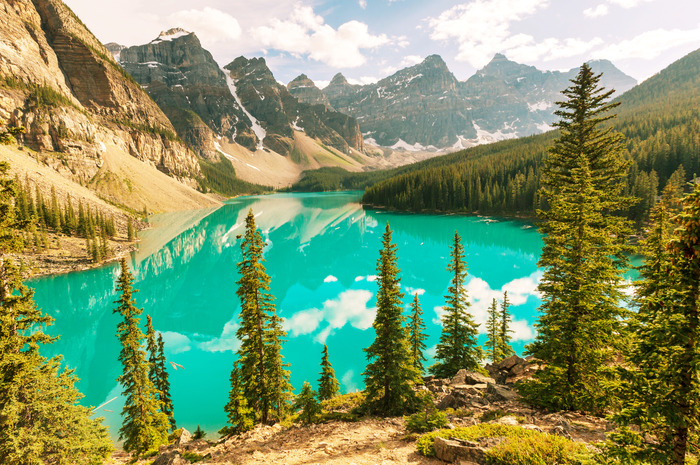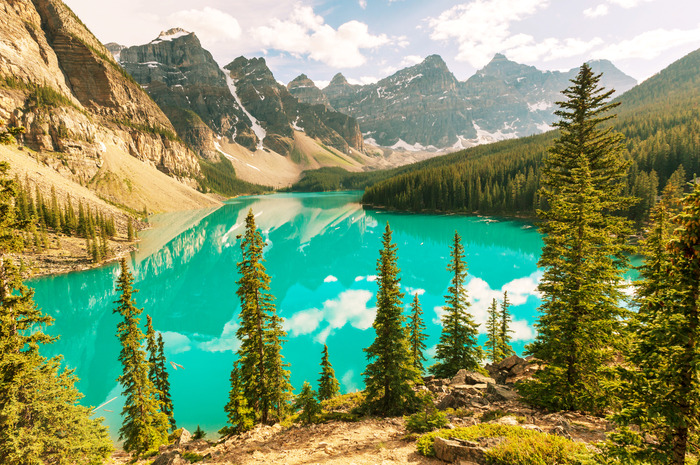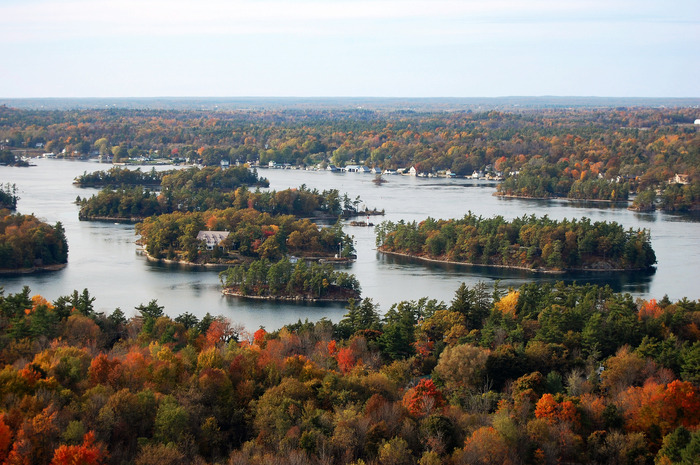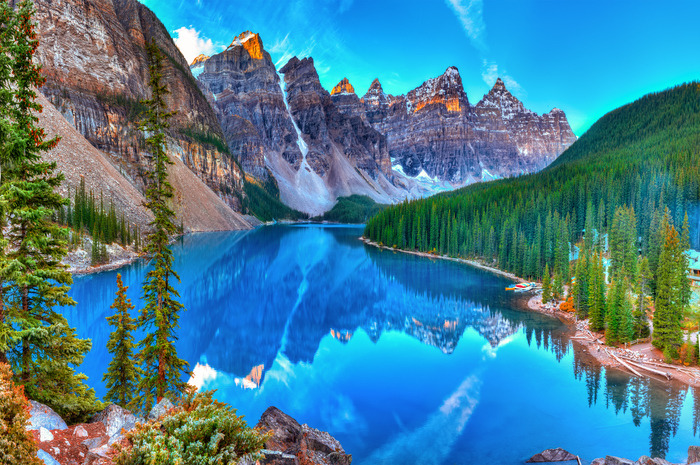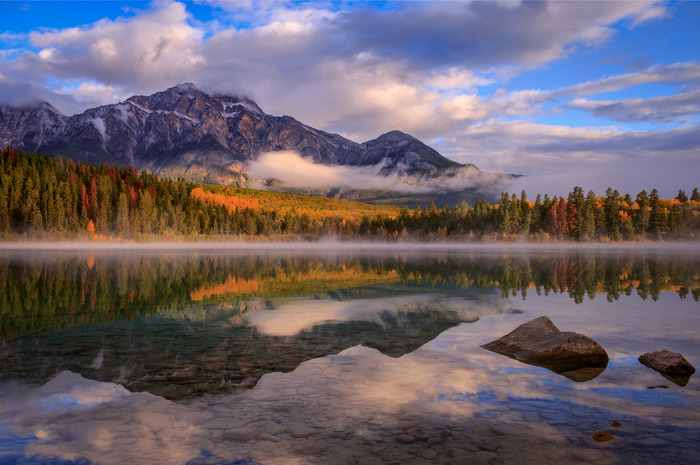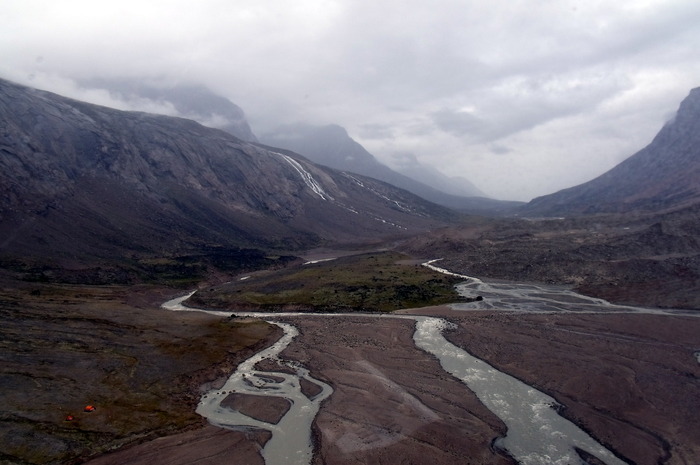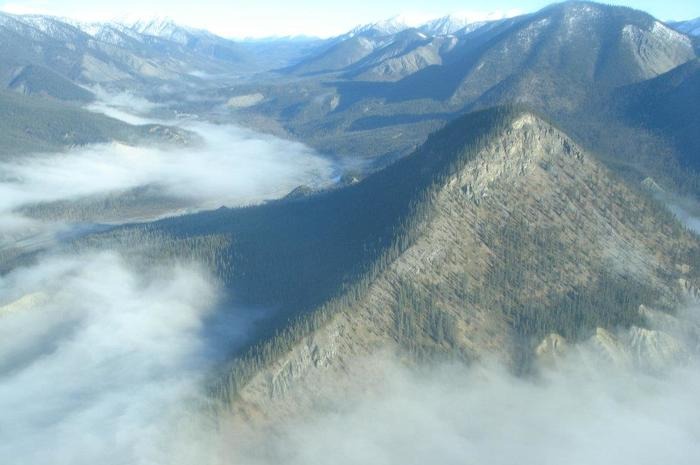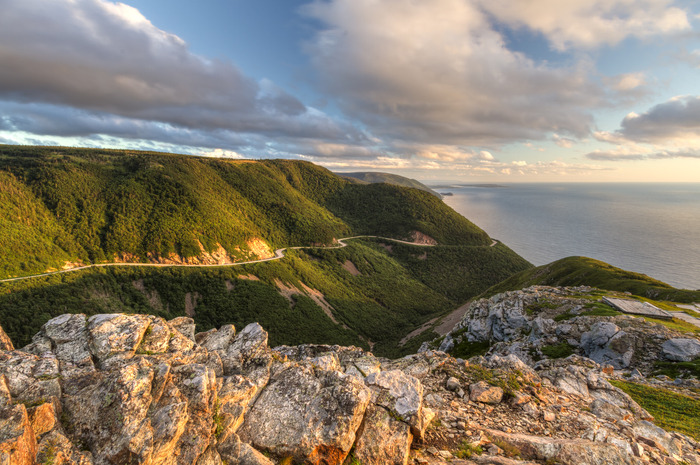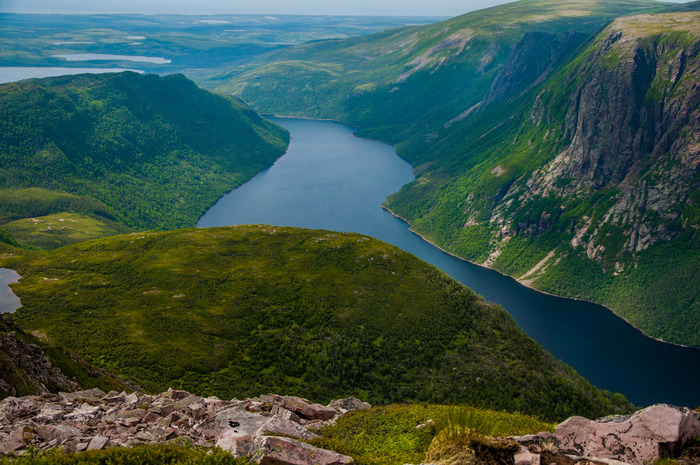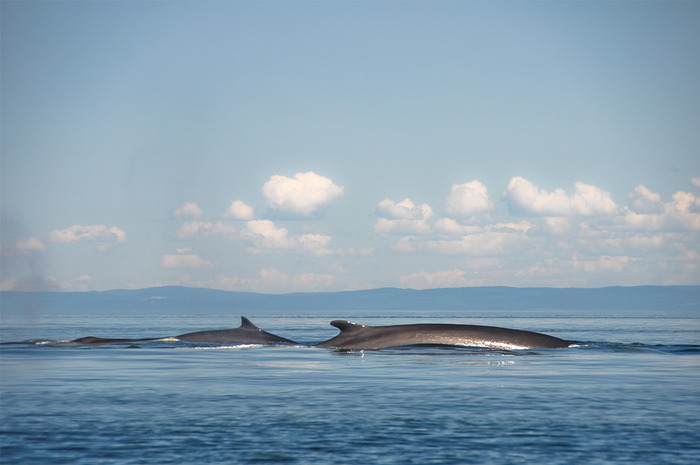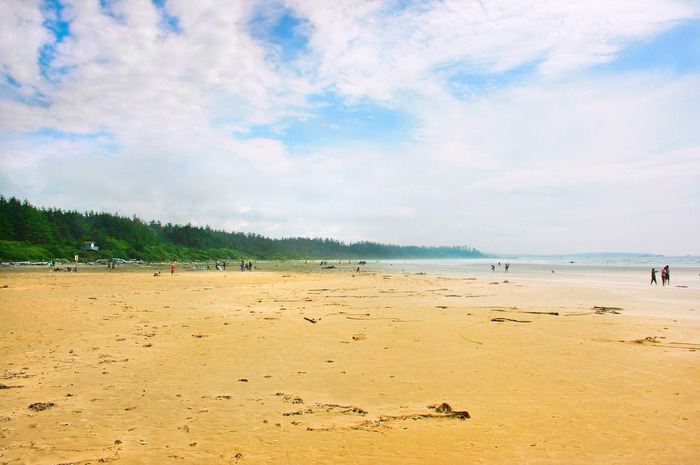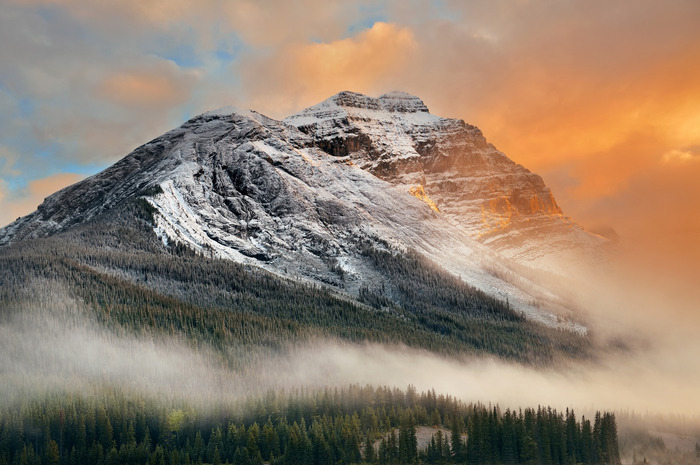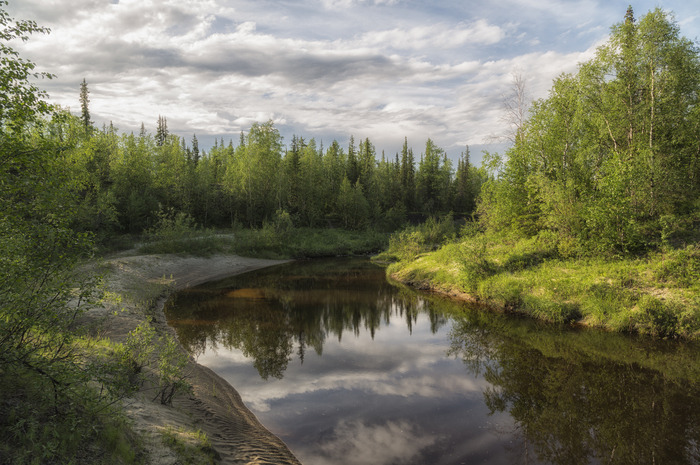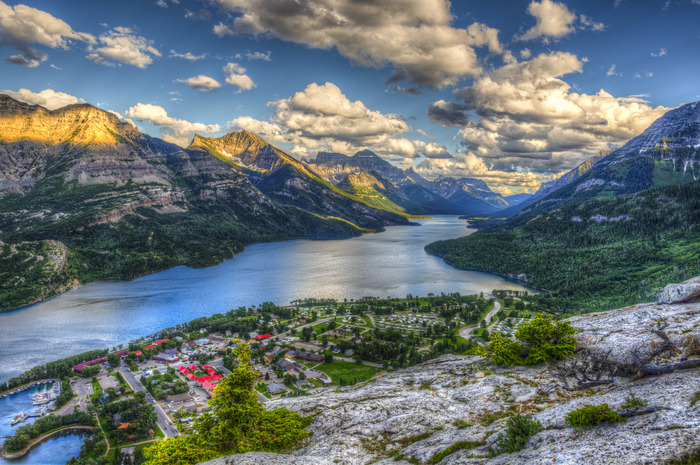Canada's Most Spectacular National Parks...'Cause They're Free In 2017
Canada’s Most Spectacular National Parks…’Cause They’re Free in 2017
Canada has a gift for everyone who wishes to visit its national parks. Due to the country's birthday, the government has decided to admit all Canadian and international guests to parks, historic sites, and marine conservation areas operated by Parks Canada free of charge. If you ever dreamed of hiking along huge glacial lakes, soaking up the sun on sandy beaches, exploring unique rocky coasts, or getting lost in lush forests, visit Canada's national park system, one of the oldest and largest in the world with 47 locations.
Wood Buffalo, Alberta
Wood Buffalo National Park is by far the largest one in Canada and in the world. It covers an area of 44,807 sq. km (27,841 sq. mi.), which is bigger than Switzerland. The park is home to North America's largest population of wild bison and to some of the largest undisturbed grass and sedge meadows left in the region. It's open year-round, but if you go in January or February you're likely to see the Northern Lights, due to the long nights.
Thousand Islands, Ontario
Thousand Islands was the first National Park east of the Canadian Rockies. It consists of more than 20 islands between Kingston and Brockville, the park is like heaven on earth for people who love all sorts of water activities. Visit the scenic granite islands; explore secluded bays by kayak or powerboat; enjoy a day by the river; discover rare species of turtles and birdlife alongside undulating hiking trails; experience the magic of this captivating and historic wilderness, just a few hours from Toronto or Montreal, according to Parks Canada.
Banff, Alberta
Established in 1885, Banff National Park is Canada's first and the world's third. It all started when construction workers stumbled across a cave containing hot springs on the eastern slopes of Alberta's Rocky Mountains. Visiting the park in the winter is like being in a small Swiss skiing town. Hiking, biking and rock climbing are popular during other months and people take advantage of the incredibly diverse rugged terrain. The ancient monoliths range from 45 to 120 million years old, with the highest in the park, Mount Forbes, coming in at 11,850 feet, according to National Geographic.
Jasper, Alberta
Locals call Jasper the gentle giant of the Rockies due to the many regal summits, infinite outdoor quests, pristine wilderness and abundant wildlife. Almost 97 percent of the park's almost 2.8 million acres is protected wilderness. The famous Columbia Icefield is there. Unpretentious and gorgeous, people keep going back to Jasper for the mountains, valleys, glaciers, forests, alpine meadows, more than 600 hiking trails, plenty of whitewater rafting opportunities.
Auyuittuq, Baffin Island
Look up and you'll be amazed by the zig-zag skyline of craggy granite peaks and glittering glaciers overlooking tundra valleys and steep-walled fiords. Auyuittuq, the only national park in Canada north of the Arctic Cirlce, is an adventurous off the beaten path destination. Hike alongside icy, thundering streams; traverse Akshayuk Pass, a natural corridor through a landscape of towering rock; spot snow geese, Arctic foxes, and human-shaped Inuksuit basking in Midnight Sun. Visit the park to see Penny Ice Cap, a remnant of the last ice age.
Nahanni National Park Reserve, Northwest Territories
Nahanni National Park Reserveis a 4,700 sq. km. undisturbed natural area, that protects a portion of the Mackenzie Mountains Natural Region offering the adventurous visitor a wilderness experience. A key feature of the park is the South Nahanni River, a paddler's paradise. Four great canyons line this spectacular whitewater river. The park's Virginia Falls are twice the height of those in Niagara. The sulphur hot springs, alpine tundra, mountain ranges, and forests of spruce and aspen are home to many species of birds, fish and mammals.
Cape Breton Highlands, Nova Scotia
Ask anyone in Canada and he or she will tell you that the Cape Breton Highlands is one of the country's most enchanting places, "where the mountains meet the sea." Hikers go for the steep cliffs and deep river canyons and bikers go for the Cabot Trail, one of the most stunning highways in the world. You can also go on a night hike for incredible stargazing opportunities, on a lantern walk through time, and geocaching, a modern treasure hunt.
Gros Morne, Newfoundland and Labrador
Gros Morne's ancient landscape is a UNESCO World Heritage Site. "The park provides a rare example of the process of continental drift, where deep ocean crust and the rocks of the earth's mantle lie exposed. More recent glacial action has resulted in some spectacular scenery, with coastal lowland, alpine plateau, fjords, glacial valleys, sheer cliffs, waterfalls and many pristine lakes." Visitors can explore more than 150 miles of hiking trails and set up a camp by the sea. Boat tours are especially popular.
Saguenay-St.Lawrence, Quebec
The park, a marine protected area of about 480 sq. mi., is one of the best places for whale watching. Take to the water on a kayak or a boat to see the magnificent sea mammals. The beluga is the only whale species that lives in the St. Lawrence all year long. Ice fishing, diving, hiking and snowshoeing are other popular activities. Go on an underwater exploration or see what animals are hiding along the seashore.
Pacific Rim, British Columbia
Pacific Rim National Park Reserve is composed of three geographically separate units: The Long Beach Unit, named after the 10 miles sandy beach of Wickaninnish Bay; the Broken Group Islands Unit, an archipelago of more than 100 islands and rocks that paddlers revere; and the West Coast Trail Unit, a 47-mile backpacking route along temperate rainforest, sandstone cliffs, waterfalls, caves, sea arches, sea stacks and beaches.
Yoho, British Columbia
Yoho National Park is divided by the Trans-Canada Highway. Vertical rockwalls and dizzying peaks draw hundreds of thousands of visitors. Hiking along stunning summits and humongous glaciers is exceptional; majestic waterfalls including the popular Takkakaw Falls offer a unique glimpse of Canada's natural wonders, from the secrets of ancient ocean life to the power of ice and water. Go on a guided hike to the Burgess Shale Fossil Beds, one of the world's most important fossil findings, and learn about 500 million years of the planet's history.
Torngat Mountains, Newfoundland and Labrador
The park, whose name means "place of spirits," is a remote and wild area, but indigenous peoples have lived here for thousands of years, according to Parks Canada. People of European descent have explored the coastal areas in the last two hundred years. Today's visitors come for wilderness-oriented experiences – camping, backpacking, climbing, and sailing, to name a few. People also go there to see polar bears and the Northern Lights. The park is accessible only by boat and charter plane during the summer.
Ivvavik, Yukon
Ivvavik is the first national park in Canada to be created as a result of an aboriginal land claim agreement. The park protects a portion of the calving grounds of the Porcupine caribou herd and represents the Northern Yukon and Mackenzie Delta natural regions. If you are looking for an adventure in a secluded subarctic wilderness, you'll find it in Ivvavik. Hike the trail to Halfway to Heaven, raft down Firth River; camp out in the fall and see the aurora borealis. The best way to access the park is by charter plane.
Prince Albert, Saskatchewan
Prince Albert National Parks is a destination for all kinds of adventurers – from those who like overnight canoe quests along remote forest lakes, to people who prefer water sport competitions in the middle of the wilderness. The park has been among the most popular recreational areas in the country for years. People love the flatlands, the hills, the lakes, and hiking trails. Camping, fishing, cycling and horseback riding throughout the southern portion of the park are also popular activities.
Waterton Lakes, Alberta
The deepest lake in the Canadian Rockies (444 feet) and the first oil well in western Canada (1902) are both found in Waterton, according to National Geographic. Pristine lakes, copious wildlife, impressive waterfalls, colorful brooks, unique rocks and mountain panoramas are what hikers and visitors in general go to see. Great fall foliage, snowshoeing in winter and wildflowers in the spring keep people coming back year-round.
